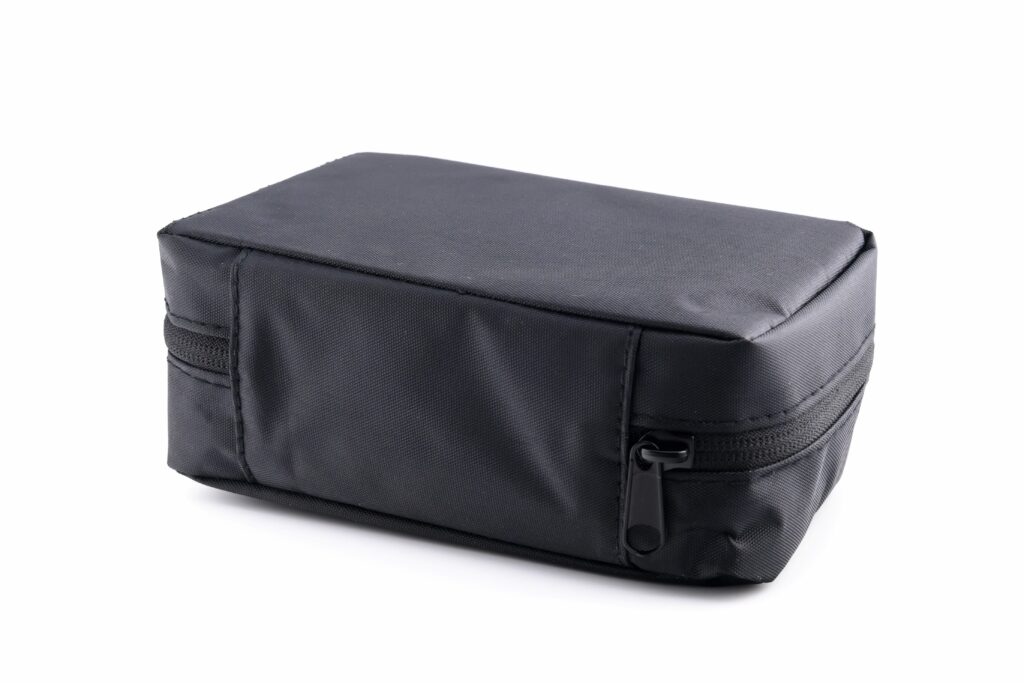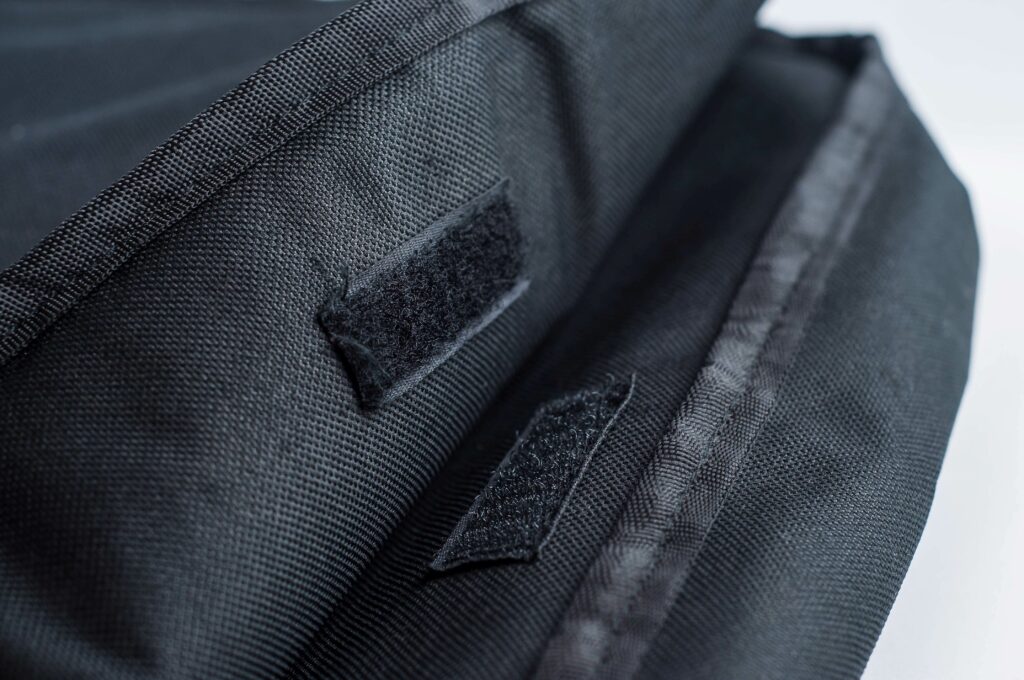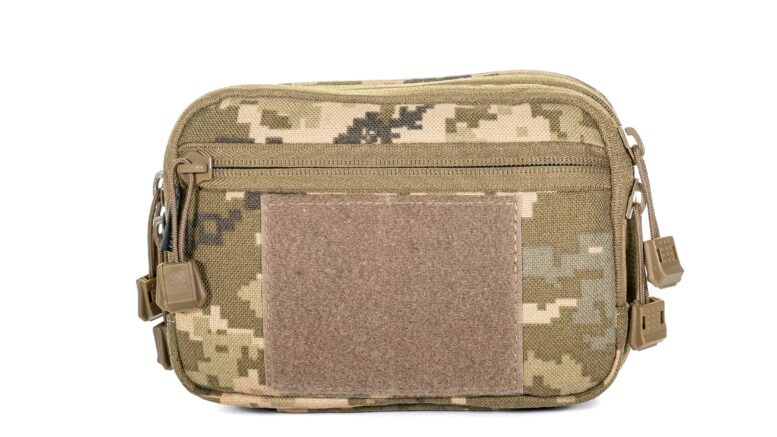When designing a custom bag or backpack, it’s easy to focus on fabric selection, compartment layout, or overall style. But one small detail has an outsized impact on performance: the closure. A bag’s closure doesn’t just keep contents secure—it determines how quickly the user can access them, how the bag holds up in harsh conditions, and even how it feels in daily use.
For decades, Fieldtex has manufactured custom bags for military, medical, industrial, and specialty markets. We’ve seen every type of closure in action, and when it comes to Velcro vs. zipper, the right choice depends on your bag’s purpose, the items it will carry, and the environment it’s built for.
This guide breaks down the pros and cons of each option, plus when it makes sense to use both.
Why Closure Choice Is Critical in Bag Manufacturing
Closures play four essential roles in a bag’s design:
- Security – preventing items from falling out or being lost.
- Accessibility – determining how quickly and easily the bag can be opened.
- Durability – withstanding repeated use, heavy loads, and environmental wear.
- User Satisfaction – influencing how the bag feels to use in real-life situations.
Because closures interact directly with the end user, they’re one of the first elements we discuss during the prototyping phase. The right choice isn’t just about “what works”—it’s about what works best for the bag’s mission.
The Case for Zippers in Bag Design
Zippers are the most common closure system in backpacks and carrying cases—and for good reason.
Advantages of zippers:
- Secure containment – perfect for holding multiple small or loose items without risk of spilling.
- Design versatility – available in water-resistant, locking, two-way, and concealed styles.
- Weather protection – with the right design, zippers can seal out dust, dirt, and moisture.
- Custom sizing – zipper length can be tailored to the exact dimensions of the pocket or compartment.
Drawbacks to consider:
- Maintenance – dirt and debris can cause jamming, especially in outdoor or industrial environments.
- Repair complexity – unlike Velcro, zippers can’t be quickly fixed in the field without tools or replacement parts.

Manufacturing tip: The zipper gauge (size of teeth) should match the fabric weight and intended load. Heavy-duty gear calls for large-tooth or coil zippers for added strength.
The Case for Velcro in Bag Design
Velcro, or hook-and-loop fasteners, is often associated with quick access—and in professional-grade bags, that speed can make all the difference.
Advantages of Velcro:
- Fast, one-handed opening – ideal when the user can’t set the bag down or remove gloves.
- Adjustable closure – can secure loads of varying sizes without strain on the material.
- Simplicity – easy to use without fine motor precision.
Drawbacks to consider:
- Wear and contamination – lint, dust, and sand can reduce holding strength over time.
- Not for loose, small items – gaps between strips may allow tiny contents to slip out.

Manufacturing tip: Consumer-grade Velcro isn’t built for heavy-duty use. We use industrial-grade hook-and-loop that withstands thousands of open-close cycles without loss of grip.
Velcro vs. Zipper: Matching Closure to Bag Purpose
Military bags – Main compartments often rely on zippers for security, while quick-access pouches and MOLLE attachments benefit from Velcro.
Medical gear – Trauma kits often use Velcro for rapid access, but delicate instruments are kept in zippered compartments to prevent damage.
Industrial bags – In dusty or muddy environments, Velcro may retain reliability longer than zippers, but for high-value tools or electronics, a zipper offers better sealing.
Outdoor & travel gear – Zippers excel at weatherproofing and containment, while Velcro can be used on external pouches for fast retrieval of essentials.
When to Combine Velcro and Zippers
Sometimes, the best answer isn’t Velcro or zipper—it’s both.
Examples include:
- Zippered compartments with Velcro flaps for extra weather protection.
- Dual-seal tactical pouches where security and speed are equally critical.
- Equipment bags where Velcro secures a cover flap while a zipper seals the main pocket.
These hybrid designs can balance quick access with long-term durability.
Manufacturing Considerations for Designers
Choosing a closure isn’t just about functionality—it impacts the entire manufacturing process:
- Sewing complexity – Zippers require precision alignment, while Velcro offers more placement flexibility.
- Material compatibility – Heavy-duty fabrics like canvas need reinforced stitching for both zippers and Velcro.
- Cost implications – Higher-grade zippers and industrial Velcro add durability but can slightly increase production costs.
In every case, closure choice should align with how the bag will be used in the field.
Final Thoughts
In the Velcro vs. zipper debate, there’s no universal winner—only the best choice for your specific design. Zippers excel at security and containment, while Velcro wins for speed and ease of access. In many cases, the most effective solution combines both.
At Fieldtex, we work with designers to prototype bags that balance performance, durability, and user experience. If you’re developing a custom bag, our team can help you select the right closure system for your application.
Explore our custom bag manufacturing services and see how we can bring your design from concept to production.

